Does Christianity Have a Psychedelic History?
Illustrations of magic mushrooms in early Christian iconography
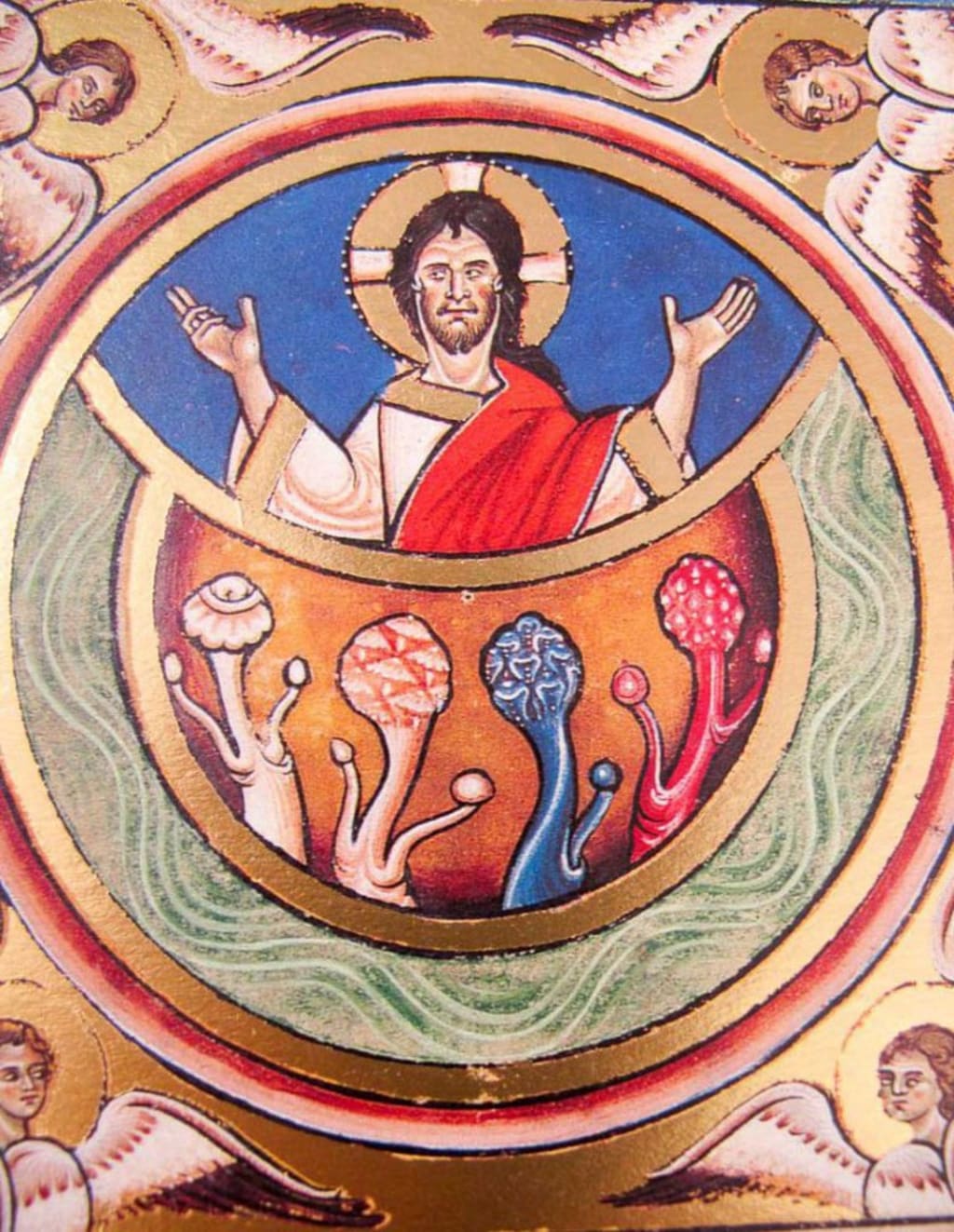
Psilocybin mushrooms commonly referred to as magic mushrooms are naturally occurring psychoactive substances. Although psilocybin was first isolated in 1958 by Dr. Albert Hofmann, the consumption of this hallucinogenic compound is historically traced back to different cultures.
Dating back to 200 CE, various mushroom motifs and a mushroom stone resembling the shape of Psilocybe Mexicana have been found in Mexico that might have been used by the indigenous people of Mesoamerica for religious ceremonies, divination, and healing.
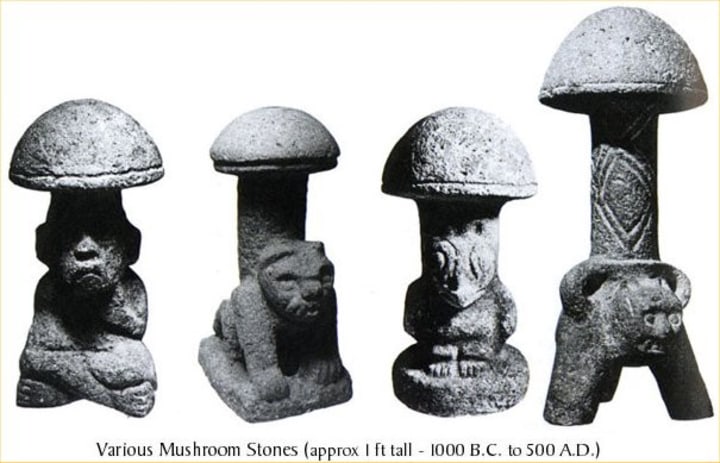
In fact, it is speculated that in Rigveda (one of the four sacred canonical texts of Hinduism), the ritual concoction Soma was a psychedelic drink. Gordon Wasson became famous to introduce psilocybin mushrooms from Mexico to the Western world published a book in 1967 called Soma: Divine Mushroom of Immortality and made a claim that the fabled drink Soma contained the psilocybin mushroom Amanita muscaria (the red mushroom with white spots).
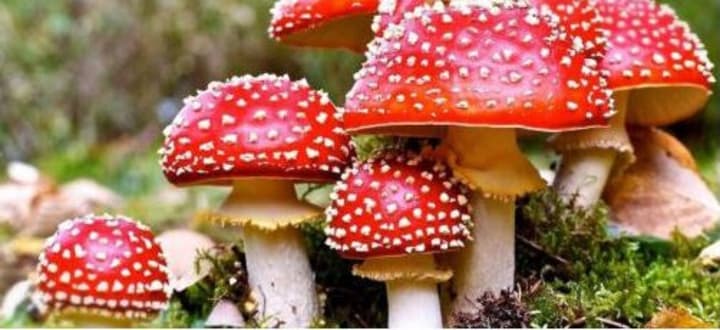
Jerry Brown, Ph.D., and Julie Brown's book The Psychedelic Gospels: The Secret History of Hallucinogens in Christianityunravel the mysterious relationship between psychedelics and Christianity. They back their claims with abundant Christian iconography found in middle-eastern churches and Europe. This book is their personal travelogue that captures some fascinating insights with regard to sacred psychedelic symbolism woven into early Christian artwork.
The depiction of magic mushrooms in early Christian art
The Browns believed in Carl Sagan's saying, "extraordinary claims require extraordinary evidence." And so, the couple did extensive field research and traveled to different ancient cathedrals across Europe and middle-east to gather visuals and evidence before publishing their book The Psychedelic Gospels.
• The Rosslyn Chapel is a 15th-century chapel that became world-famous after it was mentioned in Dan Brown's book The Da Vinci Code for the holy grail. When the Browns visited the chapel, more than 100 "green men" face in the chapel could not be avoided. The vines sprouting from the mouth symbolize nature's growth and fertility but when they tilted the photograph, they found an Amanita mushroom sculpted upside down in the forehead.

• The Plaincourault Chapel in Mérigny, France was built around the 12th century had a fresco of Adam and Eve, surrounding an Amanita mushroom and themselves covered with mushroom caps and not fig leaves.
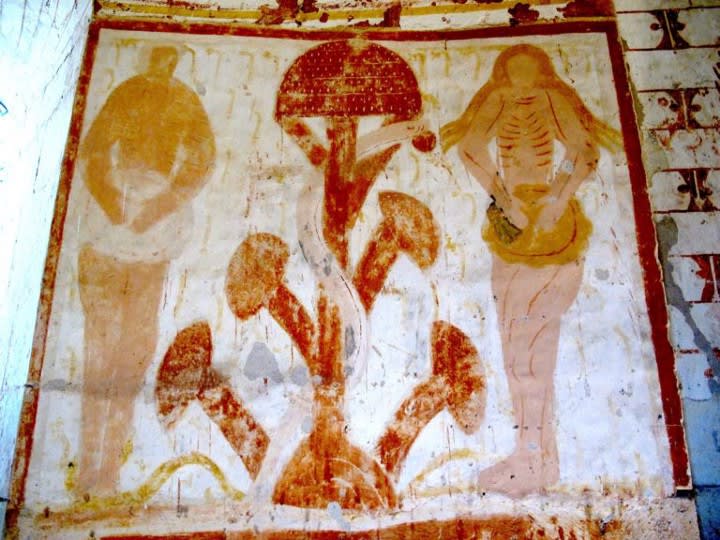
• The church of Saint Martin de Vicq in central France had a fresco portraying Christ's entry to Jerusalem. And how could we miss the five psilocybin mushrooms over the heads of the youth welcoming Christ?
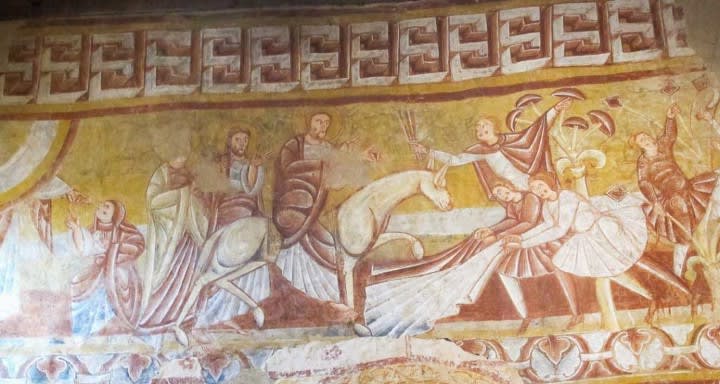
• Canterbury Cathedral in England is one of the most famous churches for Christians and when the Browns visited this church, they uncovered another psychedelic painting. Christ encircled with plants at the bottom. And these are not ordinary plants but psilocybin mushrooms including Amanita muscaria, blue psilocybin, and two other varieties of Psilocybe.
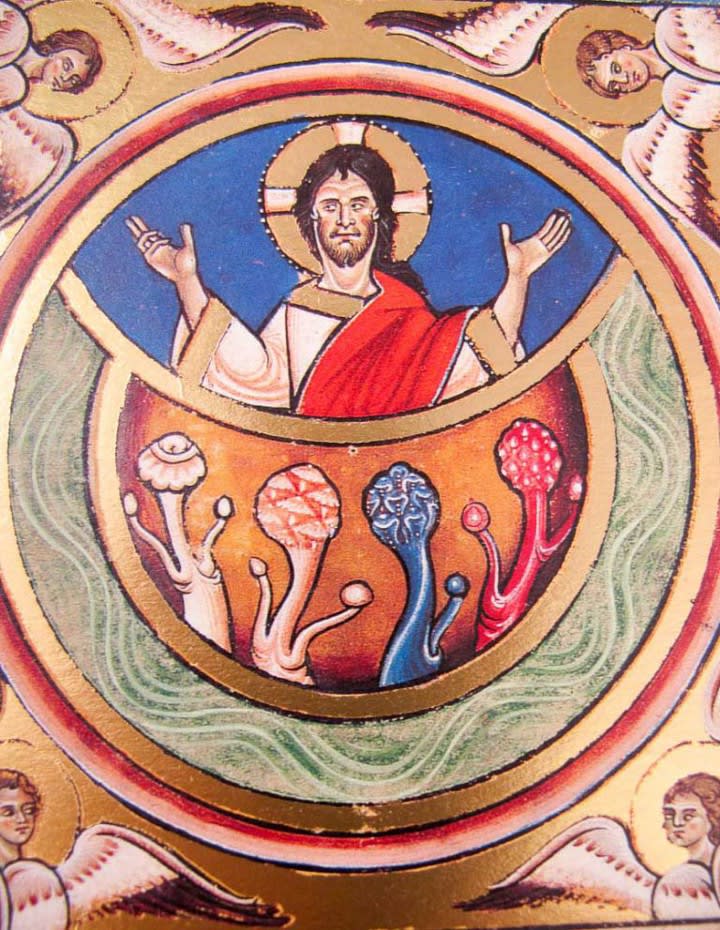
• St. Michael's Church, Germany has a painting of the Jesse Tree in which a tree grows from Jesse, founder of the lineage of the major kings of Israel, from whose tribe it was predicted that the Messiah would be born. This painting shows the Temptation scene from the Garden of Eden with a backdrop of a psilocybin red-and-gold mushroom cap.
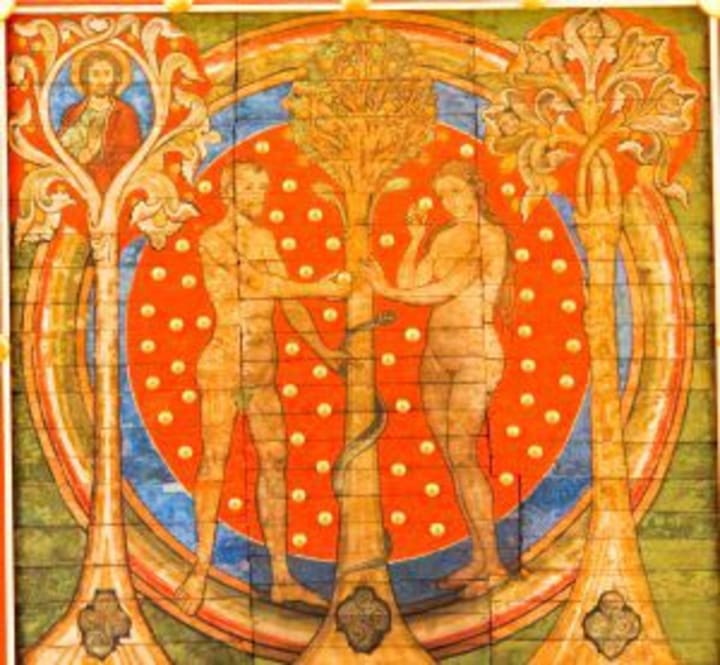
Last thoughts
Just like the consumption of psychedelics in other cultures historically, the visual evidence of these magic mushrooms reveals alternative understandings of early Christianity. Browns also believe that the use of psychedelics can bring the direct experience of divinity back into religion.
The hidden meaning behind these illustrations is debatable and often controversial. A 1970 book by John M. Allegro The Sacred Mushroom and the Cross, explores the origin of linguistics and fertility cults in early Christianity with the backdrop of magic mushrooms. Some call it the ravings of a hippie cultist, for others, it was an outlandish hoax.
If you want to hide something, put it in plain sight. To our surprise, we learned that this saying is especially true for Christianity, where medieval works of art were created to illustrate the teachings of the Bible for the largely illiterate population. - Jerry Brown, Ph.D.
References-
1. Five Sacred Psychedelic Sites
Dr. Jerry B Brown - The Psychedelic Gospels: Evidence of Entheogens in Christian Art
About the Creator
Kamna Kirti
Art enthusiast. I engage with art at a deep level. I also share insights about entrepreneurship, founders & nascent technologies.
https://linktr.ee/kamnakirti


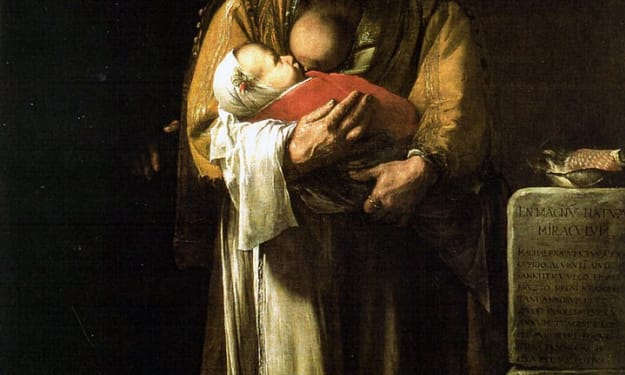
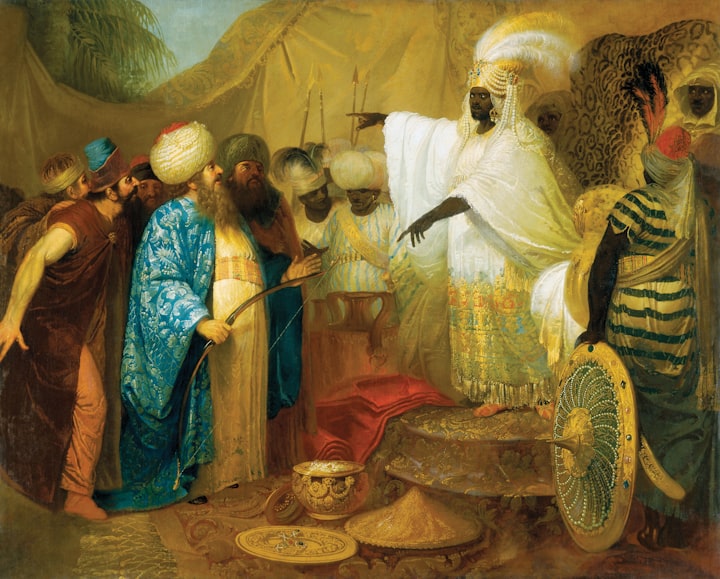


Comments
There are no comments for this story
Be the first to respond and start the conversation.